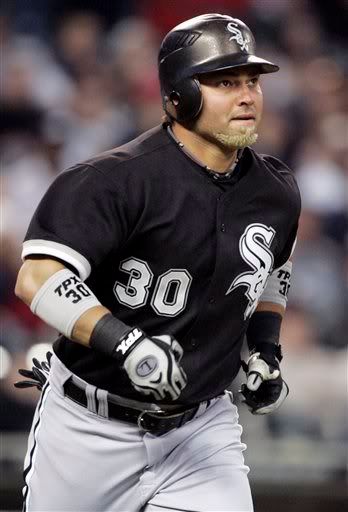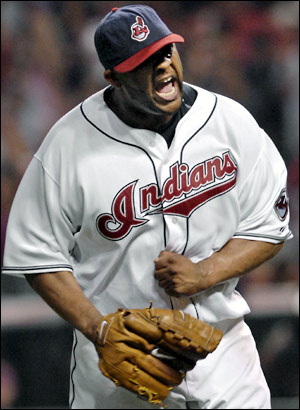The Boston Red Sox are pursuing yet another Japanese pitcher. No surprise there. But the background of the pitcher in question raises some real questions, and that's where things do get a little interesting.
Twenty-two year old right hander Junichi Tazawa was reportedly offered a contract by the Red Sox for something in the neighborhood of $6 million, though the number of years, and how much of that counts as a signing bonus are as yet unknown. Some reports suggest the contract offer could be as little as $3 million, so we'll have to wait and see.
Boston's already got two prominent Japanese pitchers on its major league roster, Daisuke Matsuzaka and reliever Hideki Okajima, and this supposedly will help them to sign Tanazawa, but I don't buy that. Seattle has Ichiro Suzuki, who is still, apparently, worshipped like Babe Ruth in Japan, catcher Kenji Jojima, and their new manager is of Japanese descent as well.
The Yankees have Hideki Matsui and (if he ever gets out of AAA...) Kei Igawa, though it seems that they're taking the high road and refusing to enter the bidding, a foolish decision, if you ask me. The Dodgers have Hiroki Kuroda and Takashi Saito, (plus three Koreans, if you don't mind lumping the Asians together).
Several other teams have at least one Japanese player, including the defending AL champion Tampa Bay Rays and the defending World Champion Philadelphia Phillies. Why wouldn't he want to play for one of them? Even Detroit, apparently as incapable of producing good baseball players stateside as they are at producing good cars, has sent an envoy to scout Tazawa in hopes of signing him. If you can't beat 'em, join em, right? No word on whether the Tigers expect Congress to pay Tazawa's contract.
Here's the thing, though: Tazawa has never pitched professionally, so you may not even see him in the majors this year, no matter whose contract he signs. ESPN's Keith Law ranks Tazawa just 25th among his top 50 free agents, and not even the top Japanese pitcher. That honor goes to 33-year old Koji Uehara, a righty finesse pitcher with lots of experience but some injury history the last two years. Given the right environment, he could be a decent 4th or 5th starter right now, whereas Tazawa will need to prove himself in the minors for a while first.
Tazawa pitched for Nippon Oil in Japan's corporate league, which is a much bigger deal than it sounds. Japan, like many Asian countries, has an economy dominated by large corporations, and these companies have tens of thousands of employees from which to choose. It might be comparable to the talent level you'd get in a league of NCAA I-AA schools or something like that. Most of the time it's not worth paying them much attention, but every once in a while a Jim Bunning or Bob Gibson or Eddie Plank comes out of a school like that, so you can't just write them off.
We forget that this was exactly how a lot of the great players were found during the first 50-75 years of organized baseball in this country. Back in the late 1800's and early 1900's, there was no farm system to speak of, and the so-called minor leagues were not nearly as expansive as they are now, plus they paid peanuts. One hundred and thirty years ago, you couldn't make a living at baseball yet, unless you were one of the very best. But if you were good enough, you could get hired by a steel mill or a mining operation or an insurance company to work in some cushy job by day and serve as the company baseball team's ringer on weekends. Philadelphia Athletics and Detroit All-Star Pinky Higgins was discovered this way.
Of course, those were companies with a few hundred employees, maybe a few thousand at the most. Nippon Oil has something like 13,000 employees. Japan Central Railway has over 15,000. Honda has over 150,000. That's a much bigger talent pool than Providence Consolidated Insurance or Indian Valley Tin Company or whatever, and those companies put a lot of money into these teams.
Look at this video of Tazawa pitching against the Japan Railway team in this year's playoffs, and look at the size of the stadiums, how many fans are there, the quality of the equipment, etc. Heck, the fact that it's broadcast in HD ought to tell you something about how seriously these corporate leagues are taken over there.
Then, as now, if you were good enough, some scout might get word of you and sign you to give up the pretense of a day job and play baseball full-time, in the majors, which was what you wanted to do in the first place, right? So the notion of a player dominating a corporate league and eventually making it in the majors is not as far-fetched as it might appear at first glance.
Not that Tazawa was necessarily hired by Nippon Oil for that purpose, but regardless of that, the fact is that the young man has some talent. He can throw in the low-90's and has a serviceable splitter and curve. Initial reports had indicated that he could reach 97 mph, but those kinds of stories are almost always inflated. Keith Law says he throws 88-92 mph, which is good enough if he's got decent off-speed stuff, but not so good that they'd be likely to put him in a major league rotation right away.
InterWebs scouting reports differ significantly on his talent level, with some saying that he's got good movement on his fastball, while others say it's pretty straight. The latter looks about right to me, and while it's true that he's got a curve and a splitter, I don't see the slider that one report suggests, just an off speed pitch, probably the split. That's plenty, I think, if he's got control of three pitches. No need to attribute a 4th pitch to him.
Specifically, he'll need to demonstrate that he can get his stuff over for strikes when the umpires aren't as generous as those in the video. One report suggested than this year with Nippon Oil, he walked only six batters in 54 innings, with a 1.00 ERA, which is like Greg Maddux vintage 1995 control. Nobody is that good (well, except Maddux...) not against an appropriate level of competition, which Tazawa has clearly not yet seen.
He could eventually be a pretty decent starter, but he'll have a rude awakening when he gets to AA or AAA and meets a bunch of guys who have faced major league pitching and aren't fooled by his big, looping curve and straight, low-90s fastball. Still, a few million dollars for a 22-year old with this much upside is a pretty decent investment, and the Red Sox could get a lot for their money.
Just not this year.













